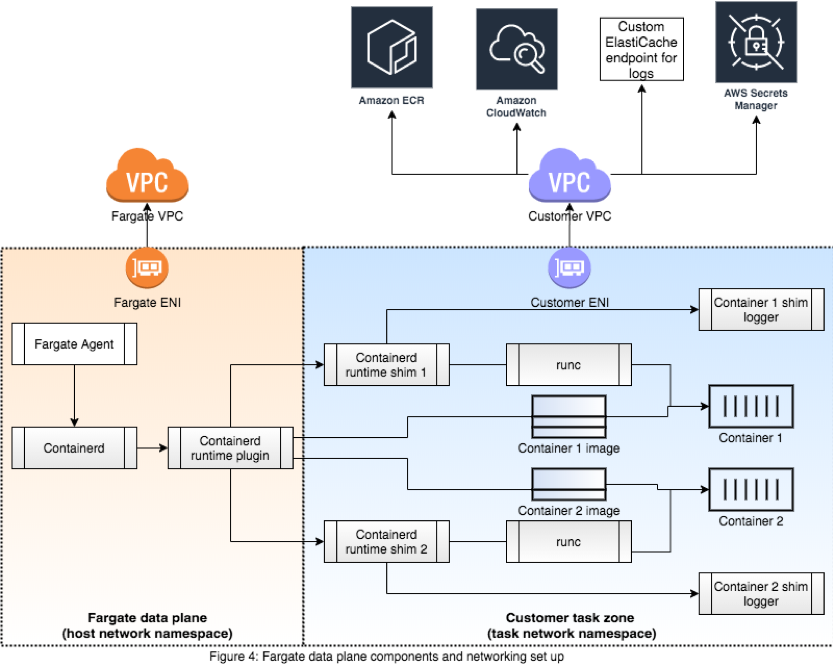Containers
Category: Amazon Elastic Kubernetes Service
Using Amazon FSx for Windows File Server on EKS Windows Containers
This blog post is deprecated and the solution is no longer valid. Please refer to the new solution that uses CSI Driver posted in the following blog post: Using SMB CSI Driver on Amazon EKS Windows nodes. Recently, we published a blog post on using Amazon FSx for Windows File Server as persistent storage for […]
Building serverless admission webhooks for Kubernetes with AWS SAM
Authors: Simon Woldemichael, Associate Solutions Architect, WWPS Solution Architecture Josh Jiang, Associate Cloud Developer, Professional Services Shared Delivery Teams Learning Level: 300 Controlling resource deployments in your Kubernetes cluster can become a difficult challenge. For instance, pushing changes to a production environment can run the risk of installing an incompatible package or vulnerable dependency that […]
Improved Amazon EKS console for cluster creation and management
We recently announced an updated Amazon EKS console experience to create clusters, management, and supporting documentation. In this blog post, we dive into the updates we have made and how they aim to help our customers and cluster administrators when creating clusters using the Amazon EKS console. 1. Multi-step cluster create flow EKS now includes […]
Introducing CDK for Kubernetes
At AWS, we’ve seen customers rapidly adopt Kubernetes to deploy applications globally, train machine learning models at scale, and standardize how they deliver innovation across data centers and the cloud. Using Kubernetes, customers are building automated tooling to replace manual processes, implementing operational pipelines for every piece of their infrastructure, and empowering development teams with […]
Using Prometheus Metrics in Amazon CloudWatch
Imaya Kumar Jagannathan, Justin Gu, Marc Chéné, and Michael Hausenblas Update 2020-09-08: The feature described in this post is now in GA, see details in the Amazon CloudWatch now monitors Prometheus metrics from Container environments What’s New item. Earlier this week we announced the public beta support for monitoring Prometheus metrics in CloudWatch Container Insights. […]
Fault tolerant distributed machine learning training with the TorchElastic Controller for Kubernetes
Introduction Kubernetes enables machine learning teams to run training jobs distributed across fleets of powerful GPU instances like Amazon EC2 P3, reducing training time from days to hours. However, distributed training comes with limitations compared to the more traditional microservice based applications typically associated with Kubernetes. Distributed training jobs are not fault tolerant, and a […]
Optimizing Spark performance on Kubernetes
Apache Spark is an open source project that has achieved wide popularity in the analytical space. It is used by well-known big data and machine learning workloads such as streaming, processing wide array of datasets, and ETL, to name a few. Kubernetes is a popular open source container management system that provides basic mechanisms for […]
Under the hood: AWS Fargate data plane
Today, we launched a new platform version (1.4) for AWS Fargate, which bundles a number of new features and capabilities for our customers. You can read more about these features in this blog post. One of the changes we are introducing in platform version 1.4 is replacing Docker Engine with Containerd as Fargate’s container execution […]
AWS Fargate platform versions primer
AWS Fargate is a managed service to run containers. This is an AWS managed service that allows users to launch containers without having to worry about the infrastructure underneath. In another blog post, we explored in detail the new features and the changes we introduced with AWS Fargate platform version 1.4.0. Let’s step back and […]
AWS Fargate launches platform version 1.4.0
AWS Fargate is a managed service to run containers. Fargate allows customers to use Amazon Elastic Container Service (ECS) and Amazon Elastic Kubernetes Service (EKS) to launch applications without the burden of having to deal with the undifferentiated heavy lifting of maintaining, patching, scaling, securing, life-cycling the infrastructure. While Amazon EC2 abstracts away hypervisors and […]






